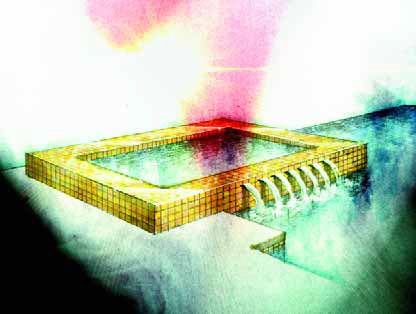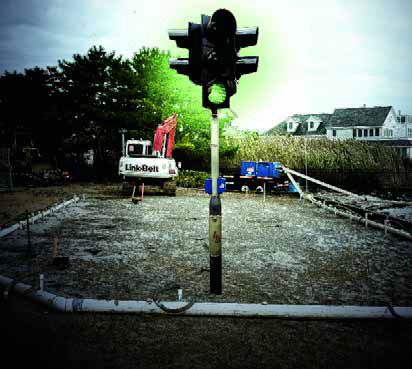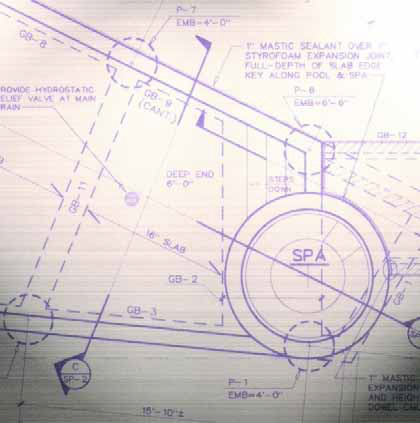preparation
In my last two columns, I've gone to unusually length in describing my views of the design-preparation and presentation processes. This time, the subjects are more compact but, in practical terms, no less significant and vital: permits and contracts. We left the discussion last time at the point where I've shown my clients the design package and it's time for them to decide what to do. In most cases, they choose to build - the usual outcome for me because of the way I pre-qualified my clients and communicate clearly with them at every step of the way. In general, if you've done the right things to this point and the project reflects an informed knowledge of what is involved in
In my last two columns, I've gone to unusually length in describing my views of the design-preparation and presentation processes. This time, the subjects are more compact but, in practical terms, no less significant and vital: permits and contracts. We left the discussion last time at the point where I've shown my clients the design package and it's time for them to decide what to do. In most cases, they choose to build - the usual outcome for me because of the way I pre-qualified my clients and communicate clearly with them at every step of the way. In general, if you've done the right things to this point and the project reflects an informed knowledge of what is involved in
Last time, I described (at great length, as you may have noticed) what happens in the time between my initial phone conversation with clients and a point just ahead of my formal presentation of a design. It's an involved process that uses all of the information I've gleaned from my clients about what they want, what they think they need and what they ultimately expect to have in their backyard environments. It's about understanding the underlying circumstances, deciding what should be done and, finally, assembling all of that insight into a
Last time, I described (at great length, as you may have noticed) what happens in the time between my initial phone conversation with clients and a point just ahead of my formal presentation of a design. It's an involved process that uses all of the information I've gleaned from my clients about what they want, what they think they need and what they ultimately expect to have in their backyard environments. It's about understanding the underlying circumstances, deciding what should be done and, finally, assembling all of that insight into a
In the design and construction of any watershape, there are a number of points in the process where you can see big differences between the way custom designers and contractors do things and the way production/volume-oriented companies go about their business. From first conversations with clients straight through to commissioning the system and turning it over to the homeowners, it's easy to spot these distinctions and define key differences. To illustrate just one of these areas, let me discuss the case of the permitting phase for the project on Long Beach Island, N.J., I began covering two issues ago. What's involved here is a cluster of issues that occurred more or less simultaneously in the project's early going. The elements of this cluster may not seem directly related to one another, but
I recently had the pleasure of taking a brief trip to Costa Rica. Beyond a little sightseeing and some rest and relaxation, my purpose was to consult with watershaper Juan Roca to determine the feasibility of creating planting plans to complement his incredible watershapes. I always do my homework when I travel to an unfamiliar area for business purposes, learning as much as I can ahead of time about local vegetation and climate. As a rule, I contact nurseries, check inventories, inquire about the possibilities of bringing in plants the nurseries may not already carry and in general try to figure out
Why is it that, on the pool/spa side of the watershaping business, it's so difficult to find much by way of truly workable plans and specifications? In residential work, of course, the tone is set by local building inspectors and plan checkers, whose needs seem to vary tremendously from place to place. But that's no excuse for the fact that the plans used in a great many residential projects are grossly inadequate - especially when compared to the far more detailed and precise plans and specifications required by
If you're a watershaper of any kind, odds are that you build concrete slabs. You build them to create decks, set up equipment pads, establish sub-bases for finish materials - and for a variety of other essential construction purposes. No matter the application, it's important to build these slabs to last, which invariably means building them correctly. This isn't something that's important just for mega-buck projects: No matter whether you're working on $20,000 cookie-cutter pools or on custom projects at the very highest level, knowing how to
Whether it's done using only a tape measure and a pair of experienced eyeballs or requires the help of satellites orbiting the planet, every construction project is surveyed before the work begins. In fact, surveyors have been plying their trade for thousands of years, and their services have been valued for one simple reason: It's really a good idea to measure the size and shape of the ground before you try to build on it. In today's terms, surveying is defined as the process of taking accurate measurements of the land on the X-, Y- and Z axes (that is, in three dimensions) and then translating that data into a usable (usually printed) format. There are several different surveying methods used to measure, process and communicate this critical information, and choosing the right one is essential to getting any watershaping project off to a sound start. So how do you determine the level of detail required and communicate your need to the surveyor so he or she can give you the appropriate level of information? Let's take a look at the different types of surveys in common use and review what those options mean in terms of creating a truly useful array of




















Bidding on Value